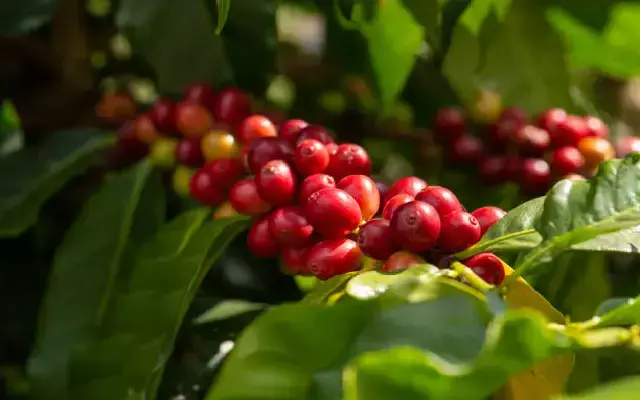
K’taka farmers turn to coffee as viable alternative to areca nut
The Indian state of Karnataka is renowned for its rich agricultural heritage, with areca nut being a staple crop in many regions. However, a shift towards coffee cultivation is gaining momentum in Dakshina Kannada, a region where areca nut has long dominated the agricultural landscape. Concerns about potential downturns in the areca industry have led a significant section of local farmers to diversify their crop portfolio by planting coffee saplings. According to reports, over a lakh coffee saplings have already been planted, sparking widespread interest among farmers and experts alike.
Traditionally, areca nut has been the primary source of income for farmers in Dakshina Kannada, with secondary crops like paddy, sugarcane, and coconut contributing to their overall agricultural output. However, the areca nut industry has been facing challenges in recent years, including fluctuations in global demand, supply chain disruptions, and increasing competition from other regions. These concerns have led farmers to explore alternative crops that can provide a stable source of income and reduce their dependence on a single crop.
Coffee, in particular, has emerged as a viable alternative to areca nut. Karnataka is already a significant coffee producer in the country, with the state accounting for over 30% of India’s total coffee production. The region’s coffee-growing belt, which spans across the Western Ghats, offers a unique combination of climate, soil, and altitude that is conducive to coffee cultivation. Moreover, coffee is a high-value crop that can command a premium price in the market, making it an attractive option for farmers looking to diversify their income streams.
The shift towards coffee cultivation is not without its challenges. Farmers in Dakshina Kannada require significant investment in infrastructure, including irrigation systems, fertilizers, and pest management measures, to ensure the success of their coffee crops. Additionally, the region’s farmers may need to adapt their farming practices to suit the specific needs of coffee, which requires a more labor-intensive and precise approach compared to areca nut.
Despite these challenges, the response from farmers has been encouraging. Many are opting for a combination of areca nut and coffee cultivation, recognizing the benefits of diversification and the potential for higher returns. “We have planted around 50,000 coffee saplings on our 10-acre farm,” said Ramesh K, a farmer from Belthangady. “While areca nut is still our primary source of income, we are excited about the prospects of coffee and the additional income it can bring.”
The Karnataka government has also taken steps to support farmers in their transition to coffee cultivation. The state’s agricultural department has launched schemes to provide farmers with subsidized loans, technical assistance, and market linkages to help them overcome the initial challenges of coffee production. The government has also established coffee processing units in the region to ensure that farmers get a fair price for their coffee beans.
The shift towards coffee cultivation is not only beneficial for farmers but also has the potential to boost the local economy. The coffee industry is a significant contributor to Karnataka’s agricultural GDP, and the growth of coffee production in the region can create new employment opportunities and stimulate economic activity.
In conclusion, the trend towards coffee cultivation in Dakshina Kannada is a welcome development, offering a viable alternative to areca nut for local farmers. While challenges remain, the response from farmers has been encouraging, and the government’s support can help overcome the initial hurdles. As the coffee industry continues to grow in the region, it is likely to have a positive impact on the local economy and provide a stable source of income for farmers.






